

Khajuraho
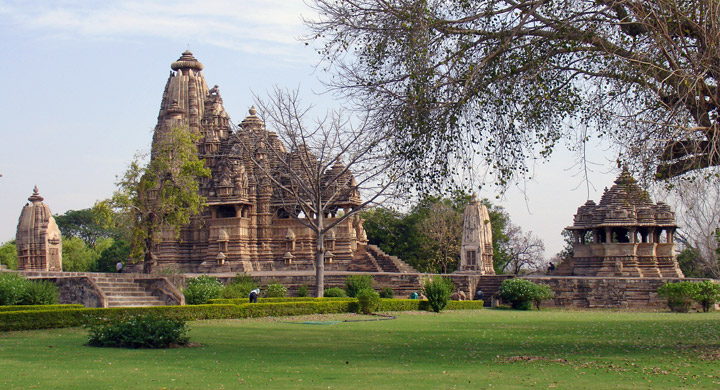
From the Gupta period onward Hindu temples tended to become larger and more prominent, and their architecture developed in distinctive regional styles. In northern India the best remaining Hindu temples are found in the town of Khajurāho in northern Madhya Pradesh.
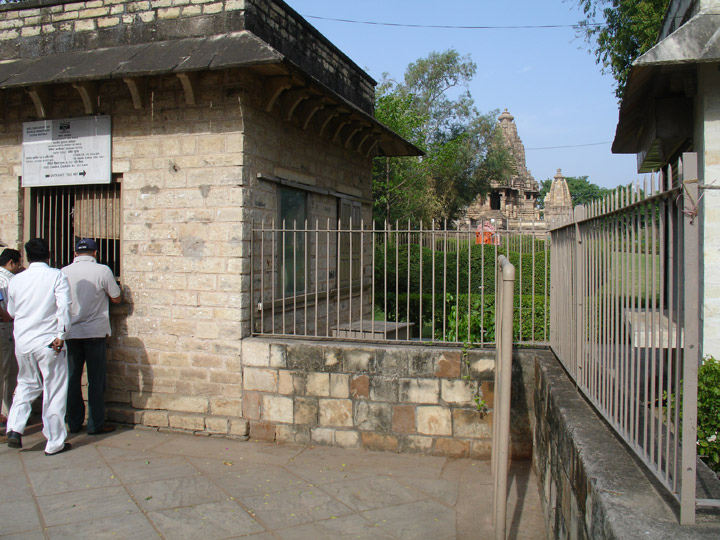
the entrance

. The most important Khajurāho temples were built during the 11th century.
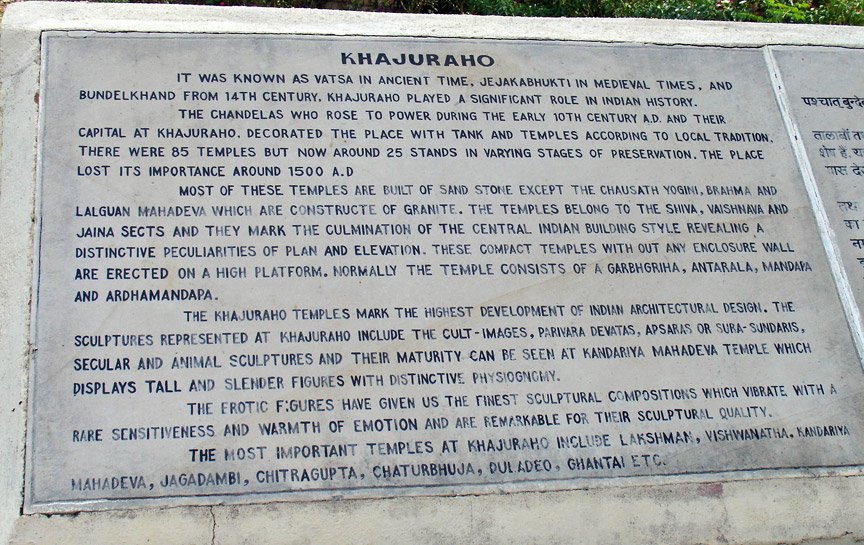
In the temple the god was worshiped by the rites of puja (reverencing a sacred being or object) as though the worshipers were serving a great king. In the important temples a large staff of trained officiants waited on the god. He was awakened in the morning along with his goddess, washed, clothed and fed, placed in his shrine to give audience to his subjects, praised and entertained throughout the day, ceremoniously fed, undressed, and put to bed at night. Worshipers sang, burned lamps, waved lights before the divine image, and performed other acts of homage.
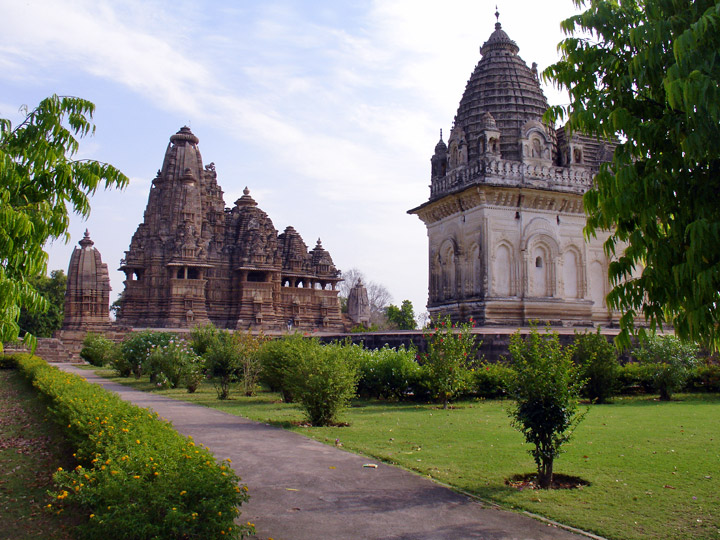

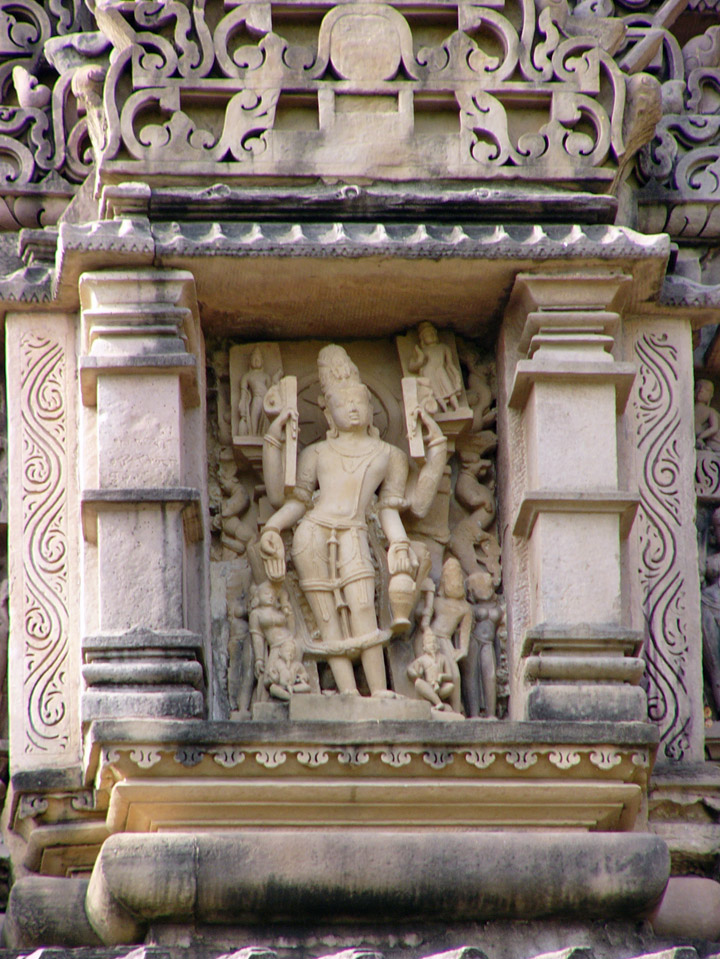
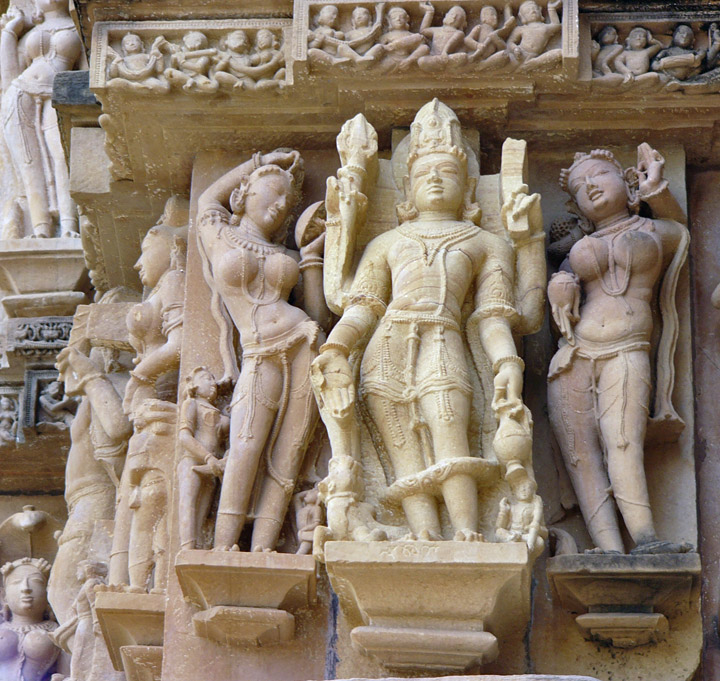
The god's dancing girls (devadasis) performed before him at regular intervals, watched by the officiants and lay worshipers, who were his courtiers. These women, either the daughters of devadasis or girls dedicated in childhood, may have also served as prostitutes. The association of dedicated prostitutes with certain Hindu shrines can be traced back to before the Christian era.
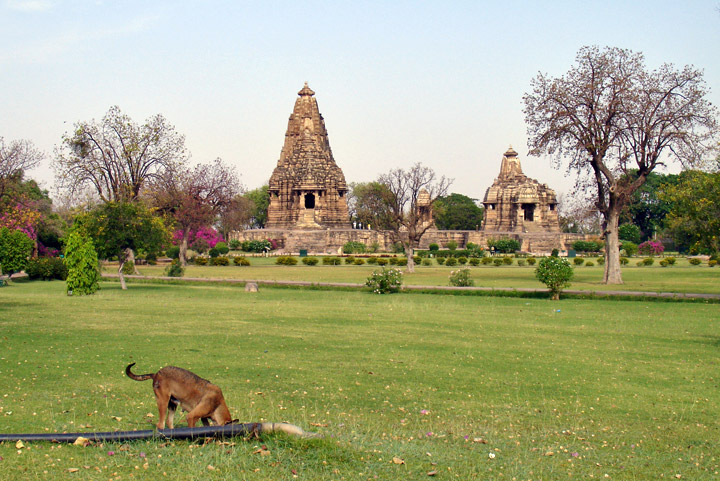
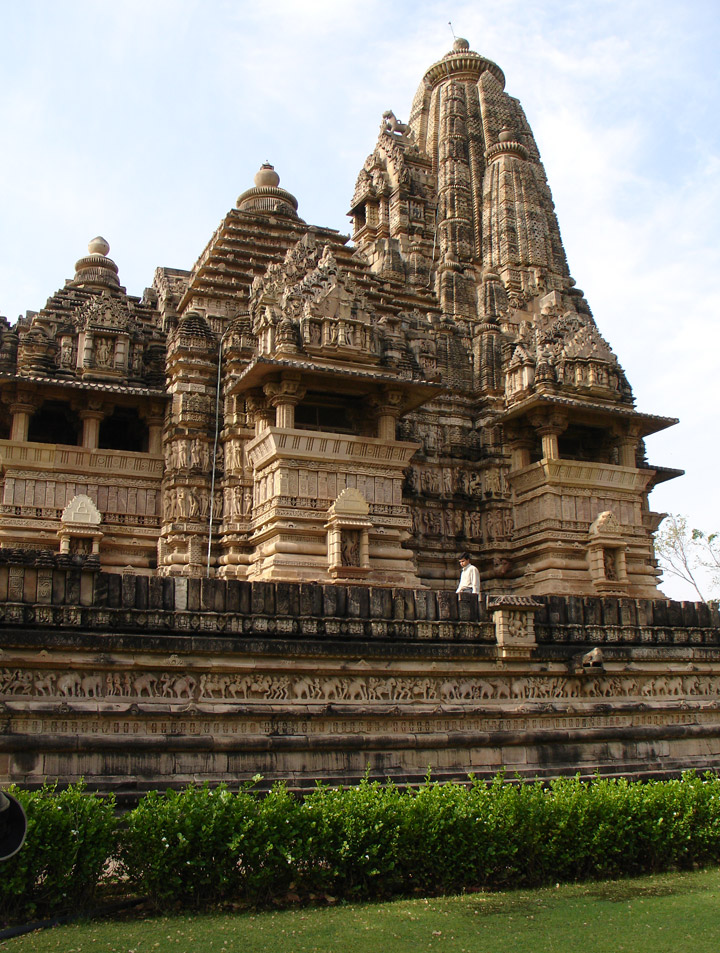
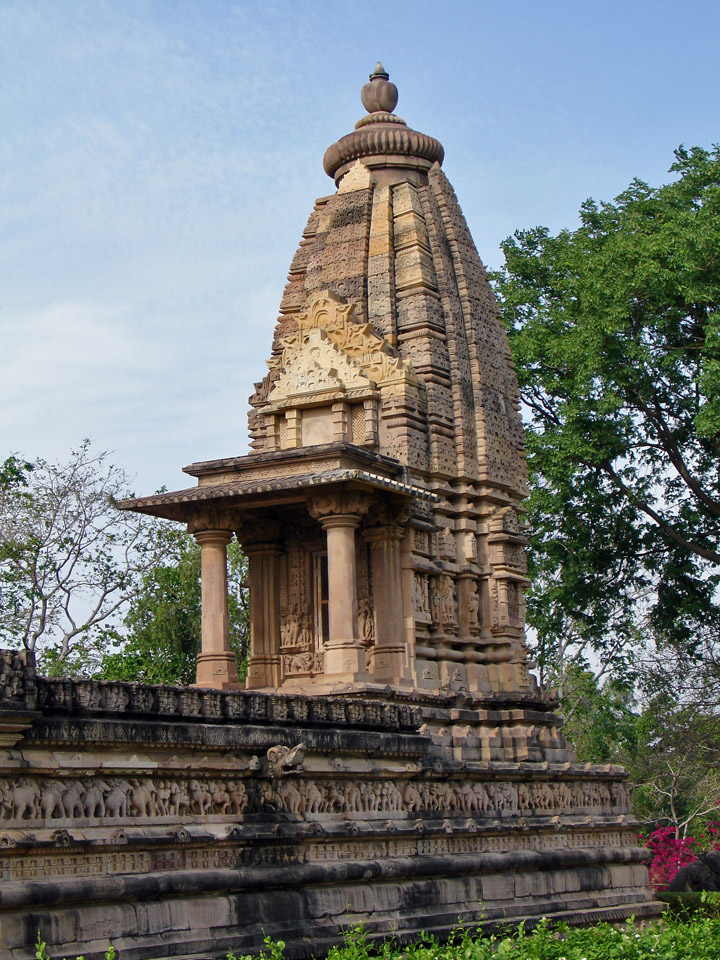
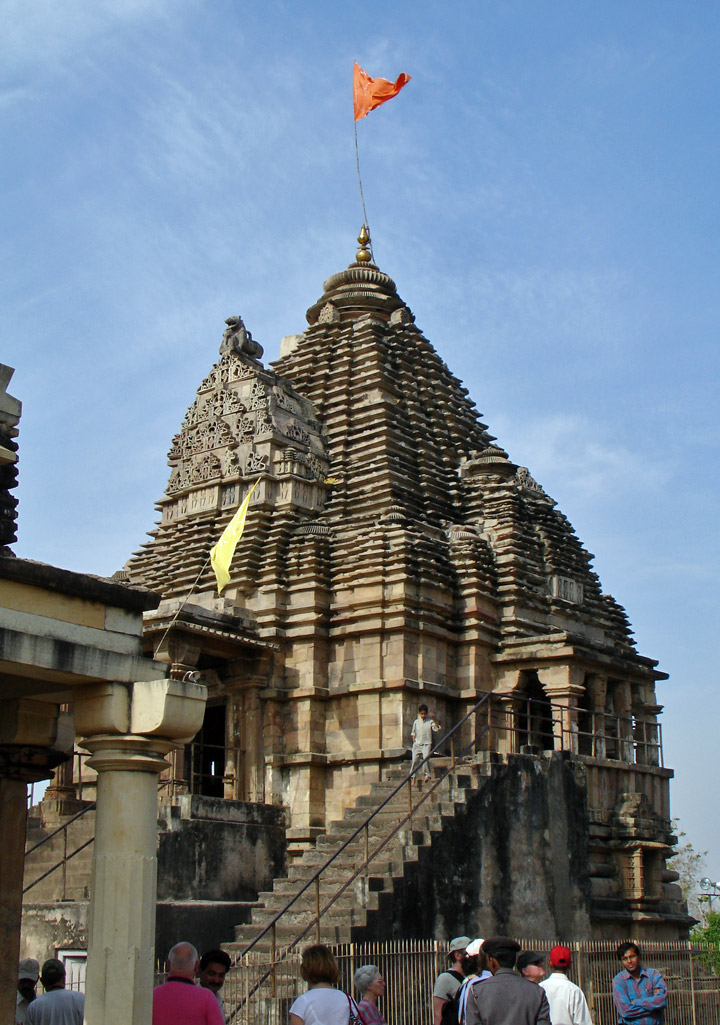
Lakshmana Temple
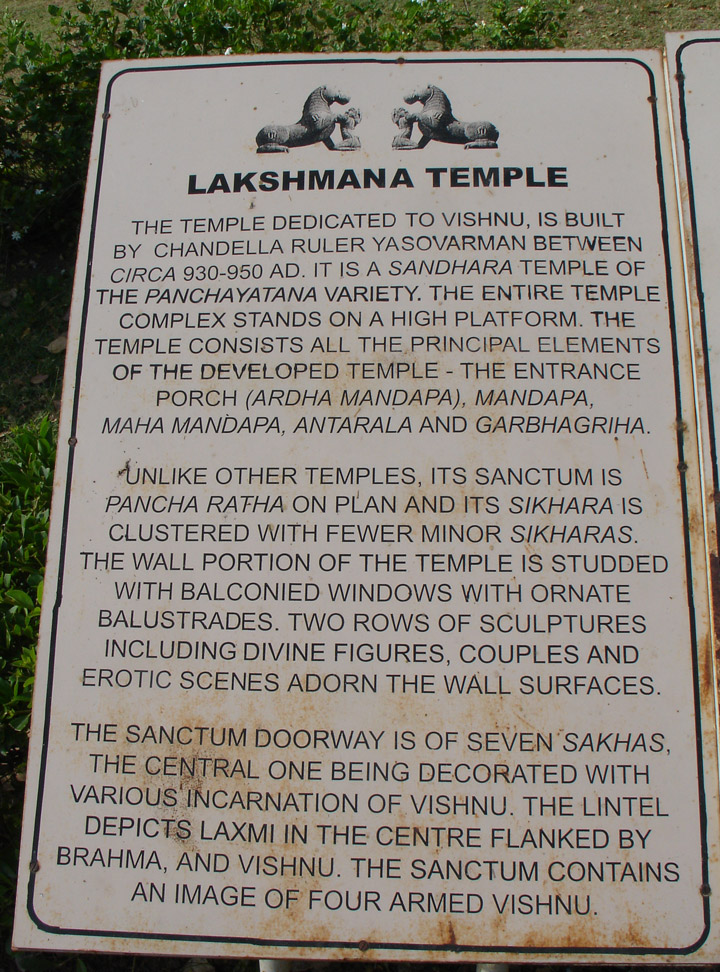
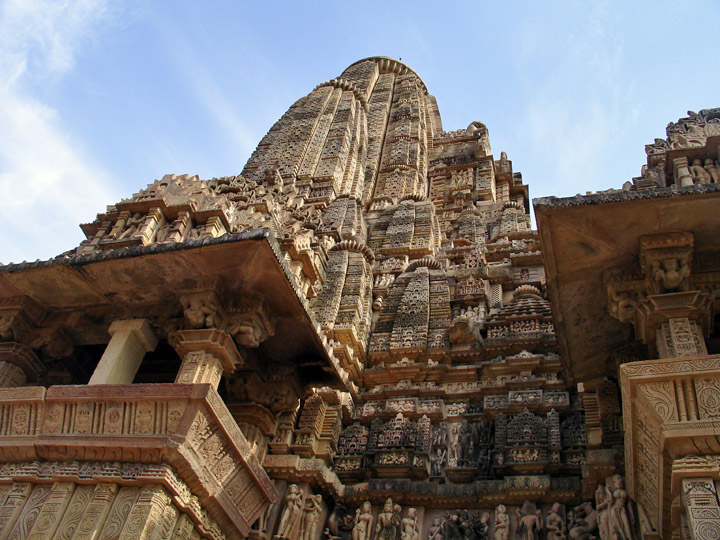
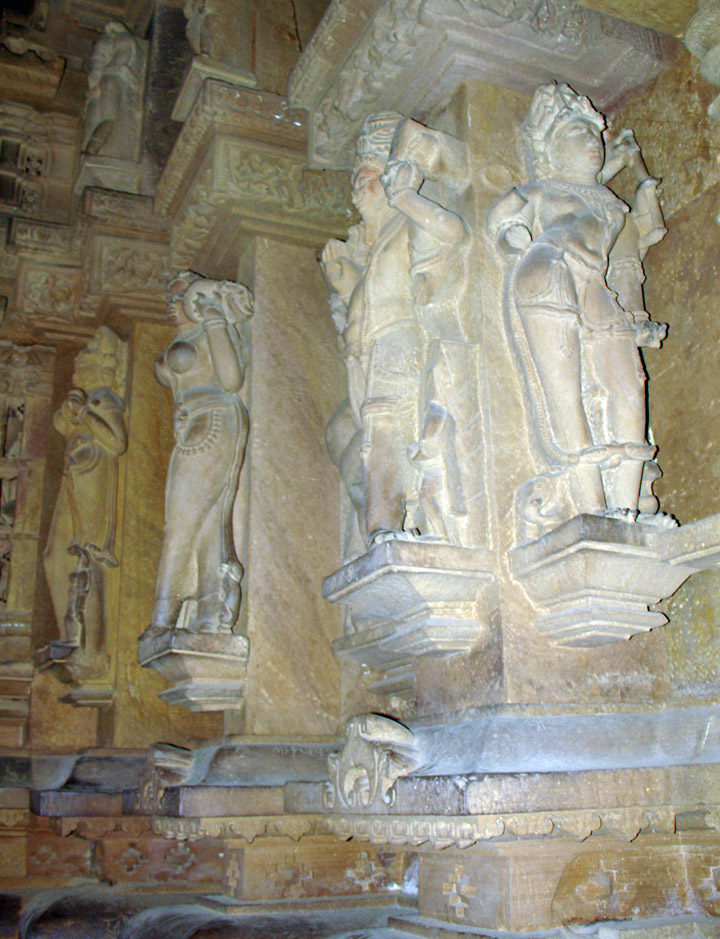
the interior

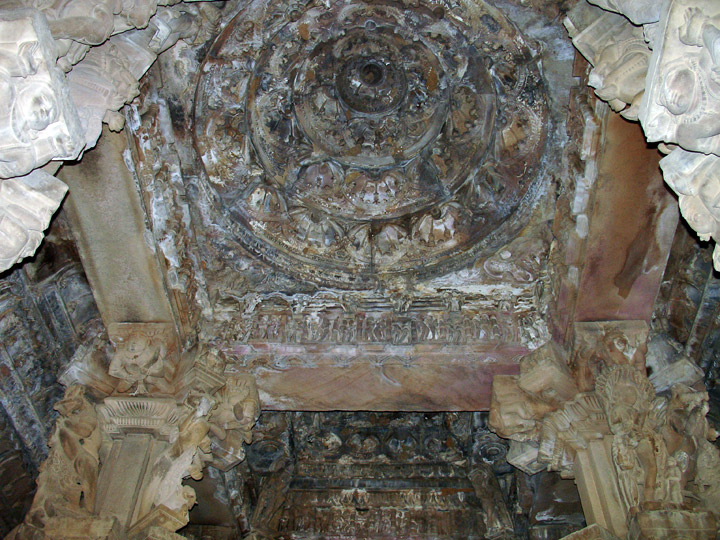
the dome
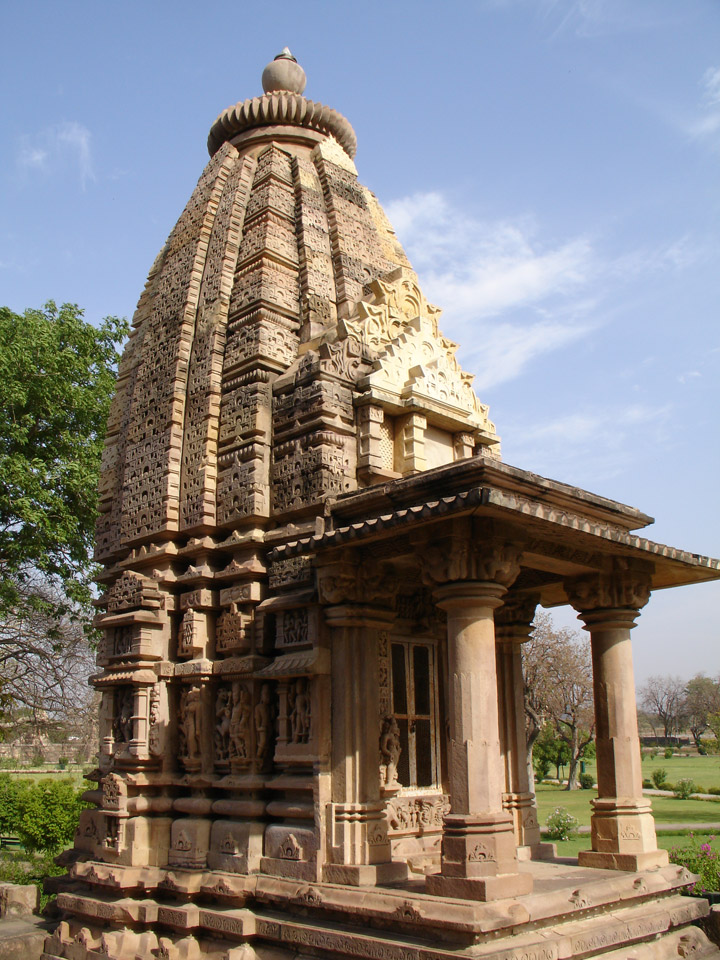
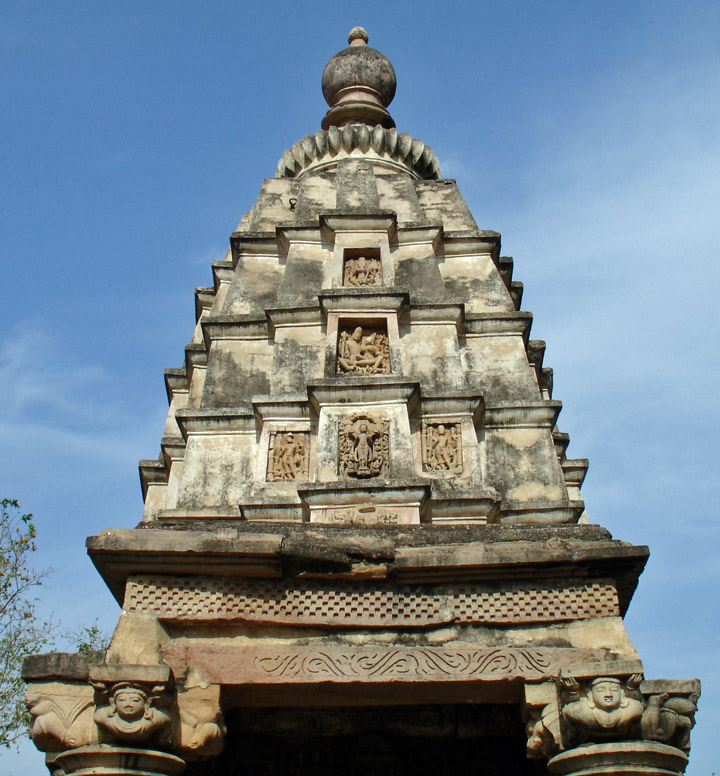
With the 10th century, the
conventions of North Indian sculpture became fairly well established. The style
is represented by examples from such monuments as the Lakmaa temple at
Khajurāho (dated 941), the Harasnāth temple at Mt. Harsha (c. mid-10th century),
in Rājasthān, and numerous other sites scattered all over northern India. These
works are executed in a style that has become harder and more angular, the
figures covered with a profusion of jewelry that tends to obscure the forms it
decorates. These features are further accentuated in the 11th century, when many
temples of great size, adorned with prodigious amounts of sculpture, were
erected all over northern India. There is a decline in the general level of
workmanship: the carving is often entirely conventional and lifeless, the
features rigid and mask like, and the contours stiff and unyielding. The
ornamentation, consisting of a profusion of beaded jewelry, is for the most part
as dull, repetitive, and lifeless as the rest of the sculpture. This phase of
artistic activity is represented at important centers from Gujarāt to Orissa;
one of them is Khajurāho, with a vast amount of sculpture, all in a good state
of preservation but conceived and executed as perfunctory architectural
ornamentation. Not all sculpture, however, is of inferior quality; the hard,
metallic carving and angular, stylized line sometimes result in works possessing
a cold brilliance.
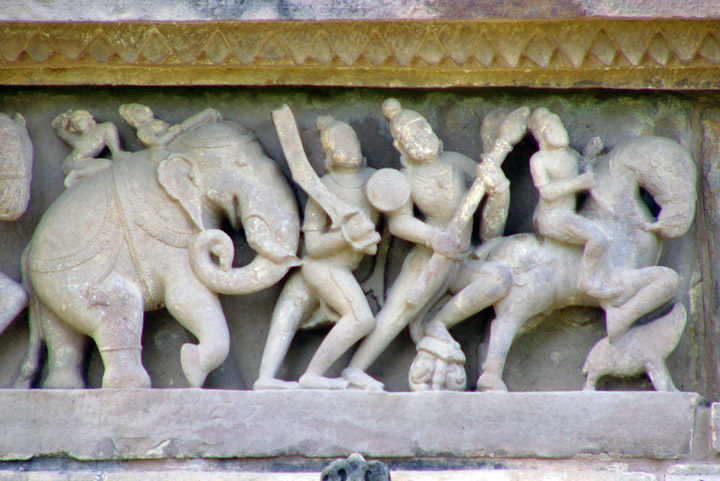

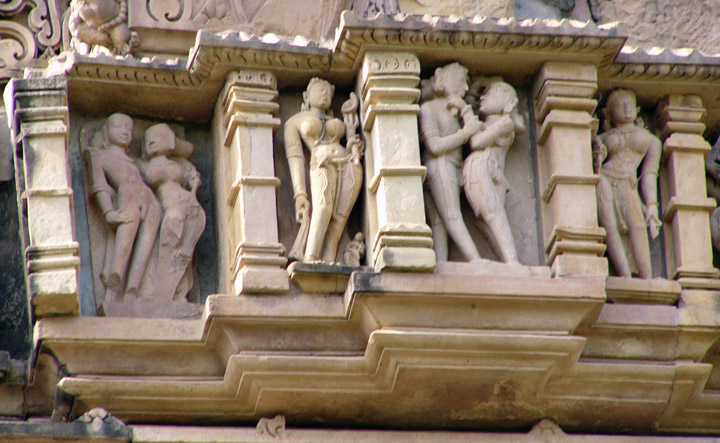
Photos of the Mithuria (erotic figures)
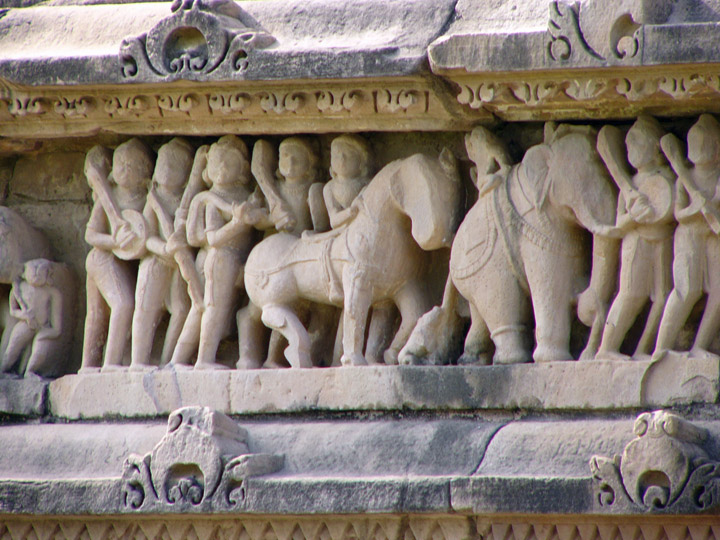
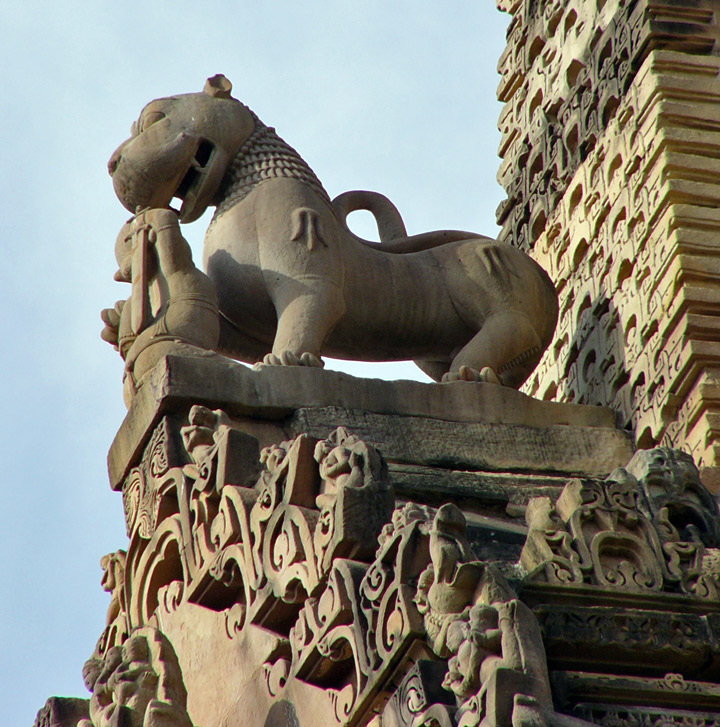
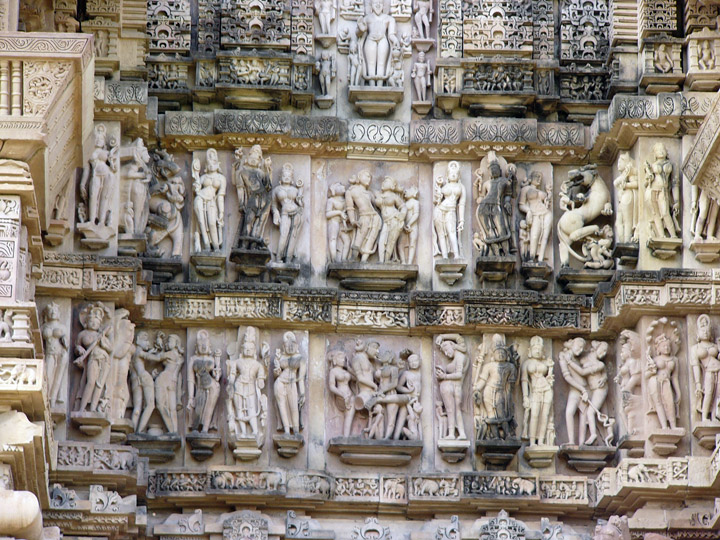
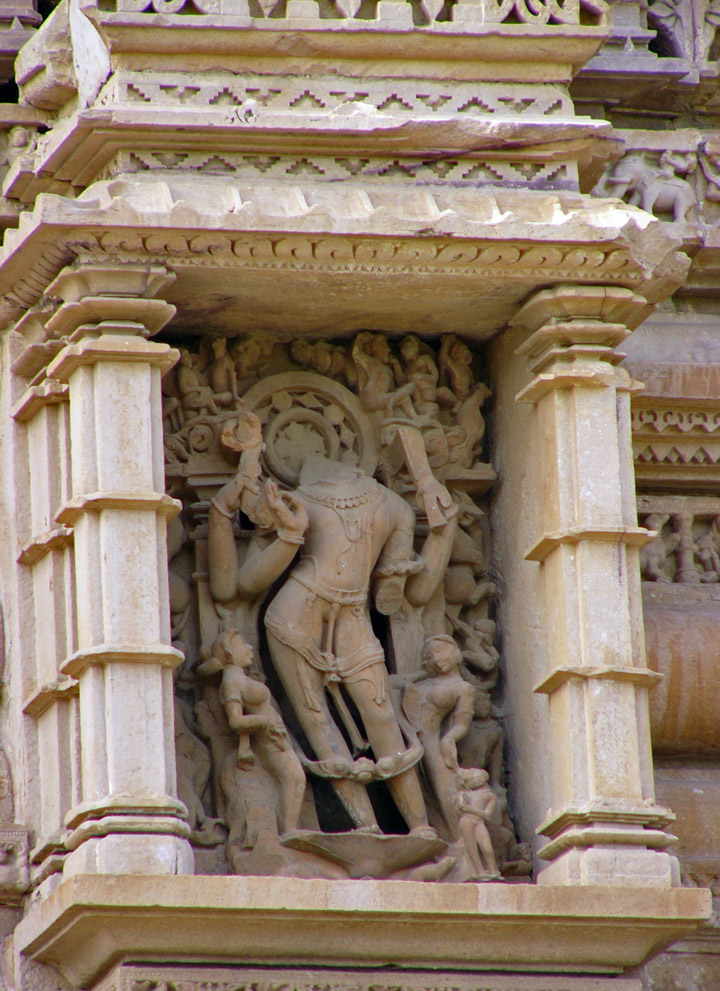
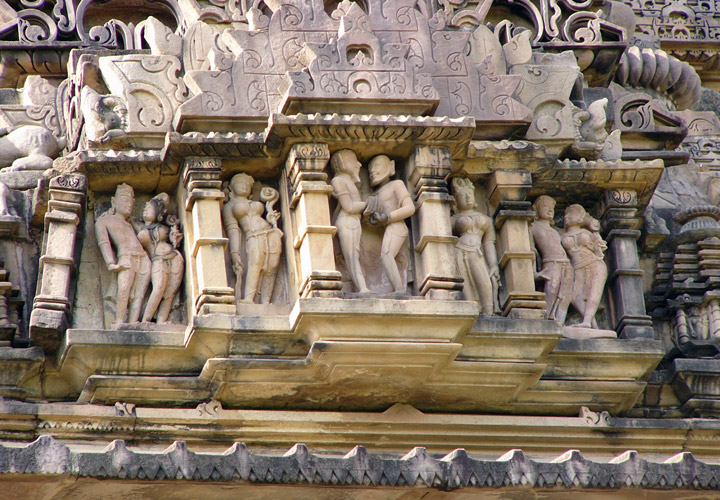
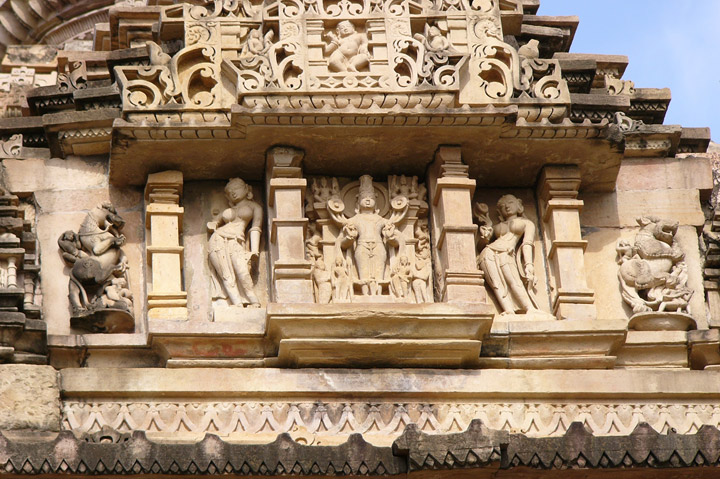
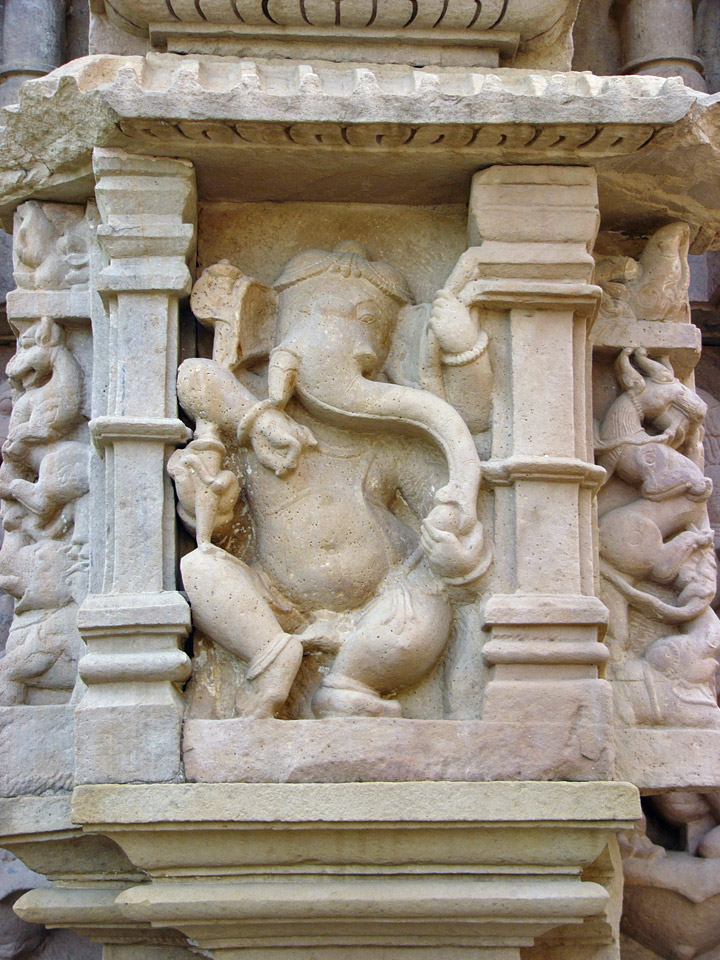
Ganesh

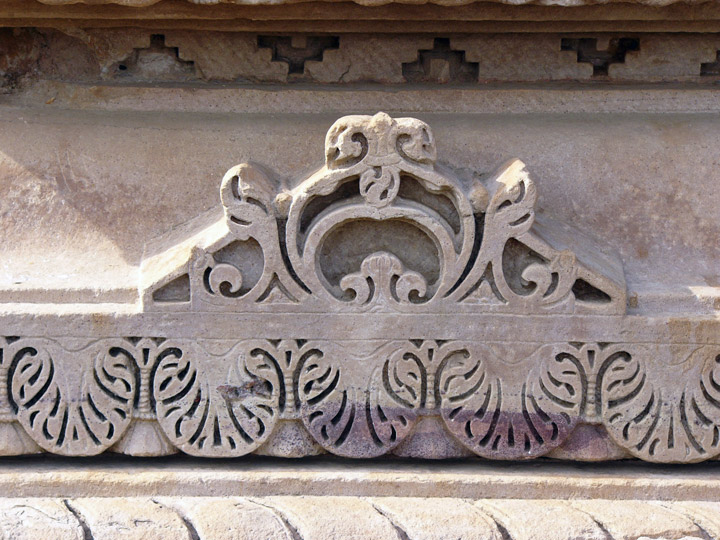
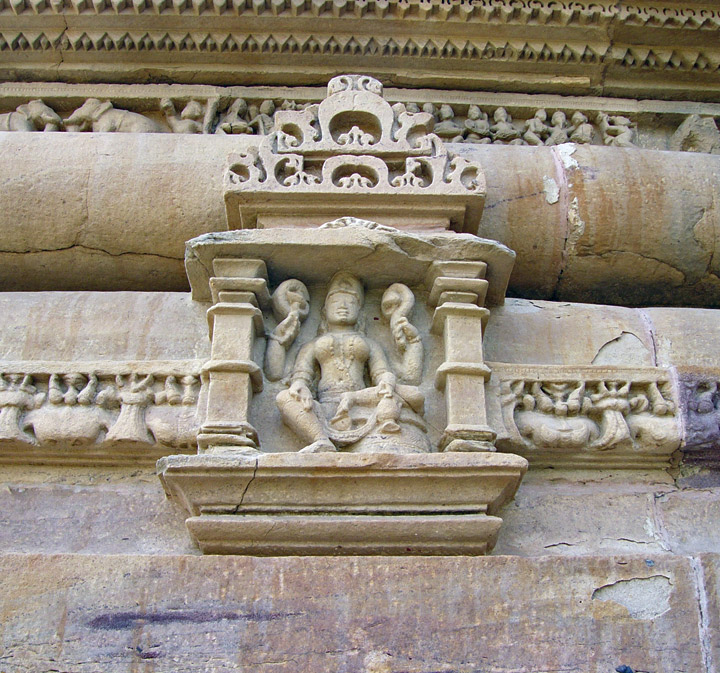
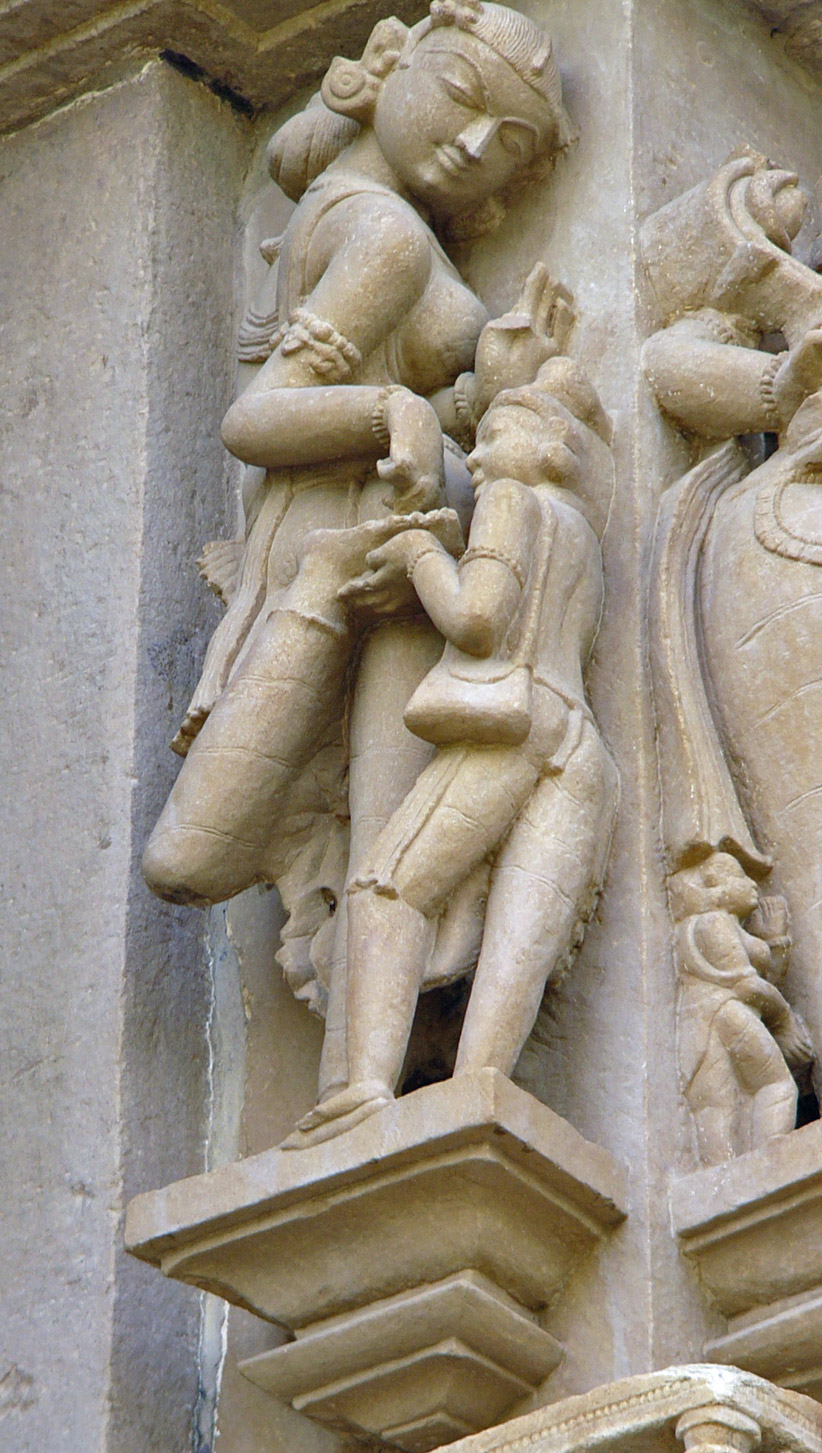
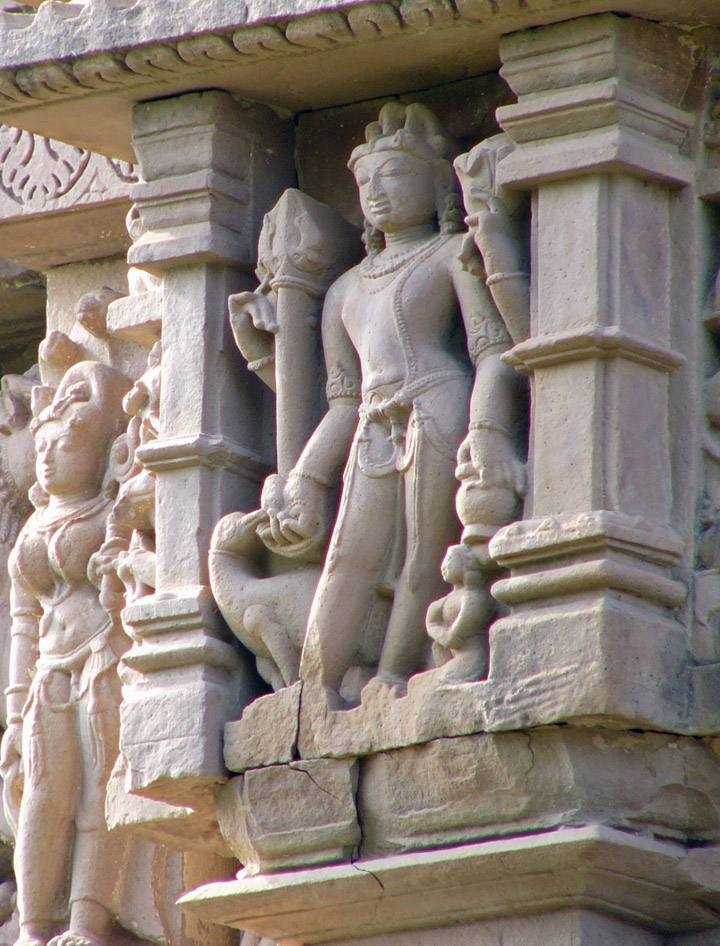
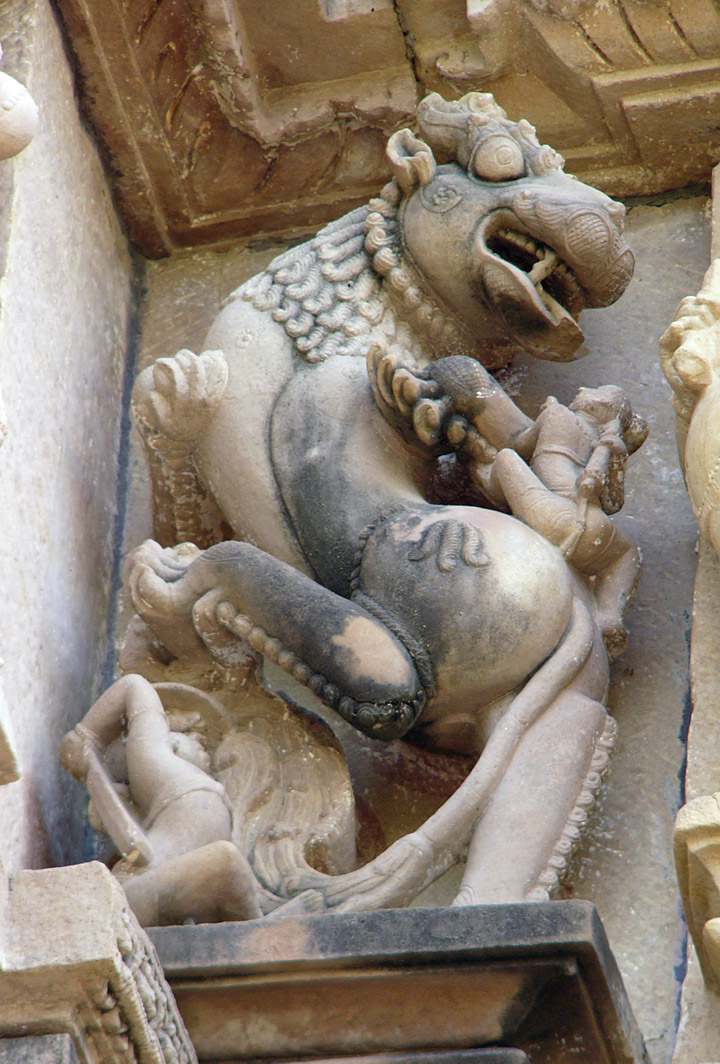
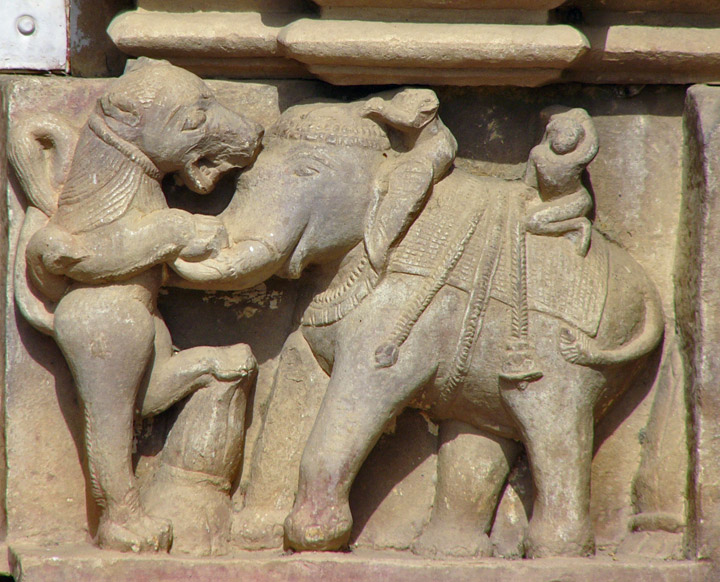
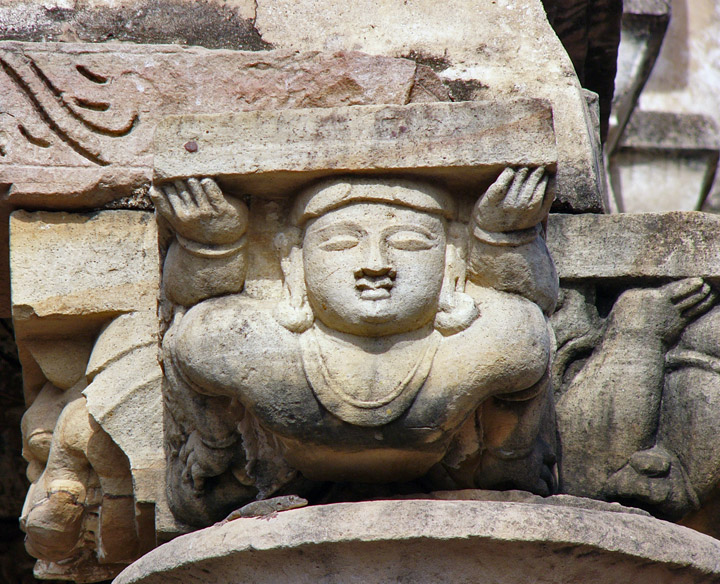
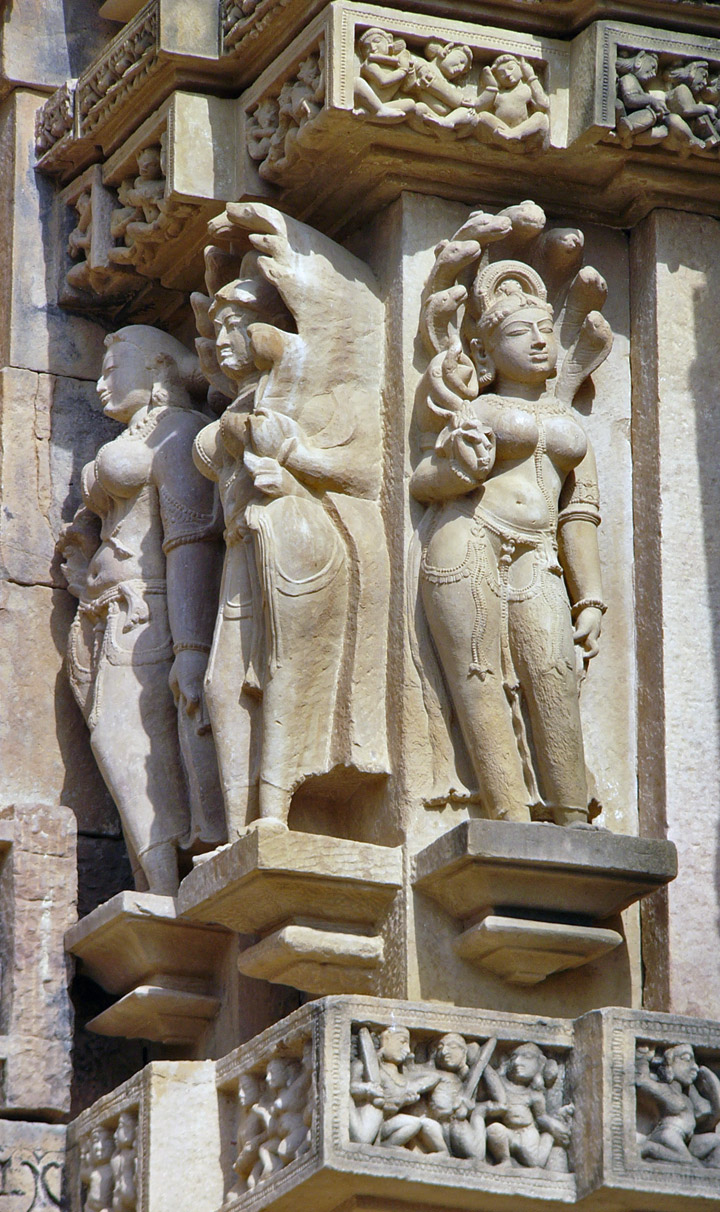
apsaras (celestial virgins)
Khajuraho's White Temple
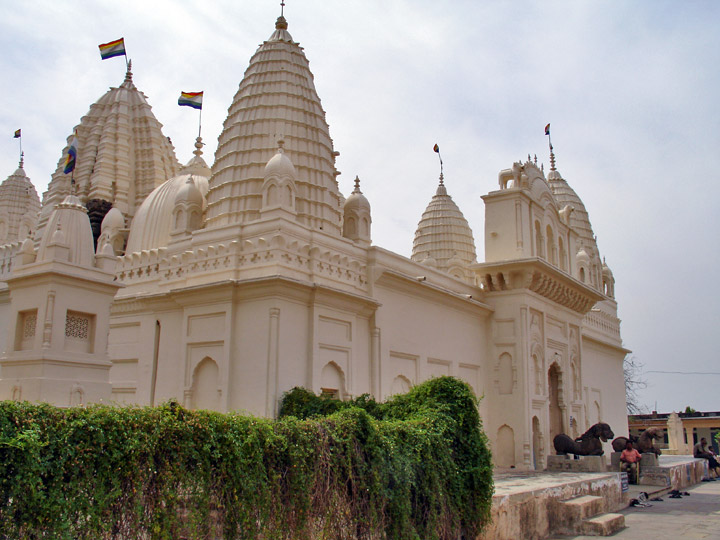
train trip to Jhansi

More Photos from the the train trip to Jhansi